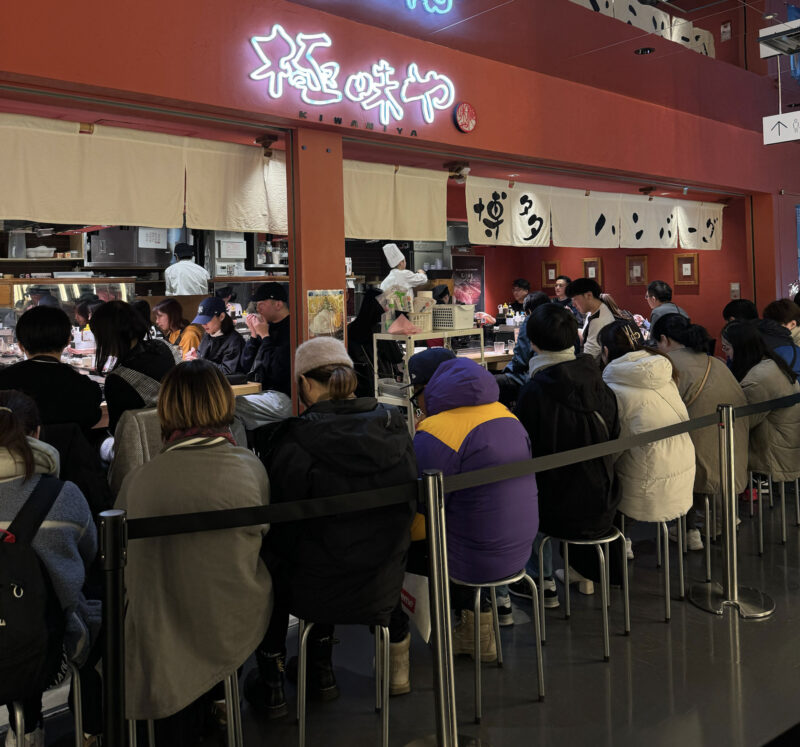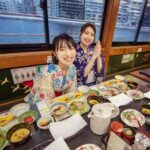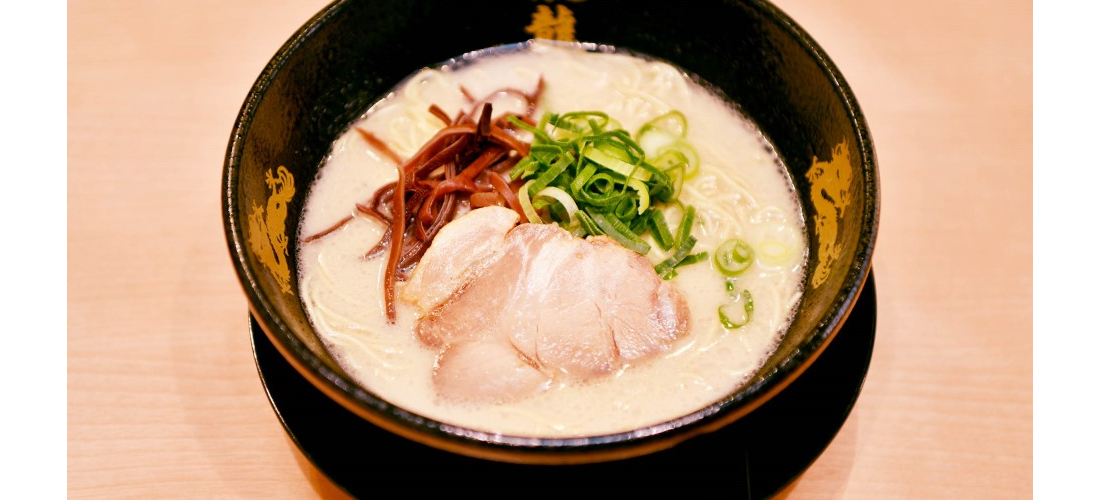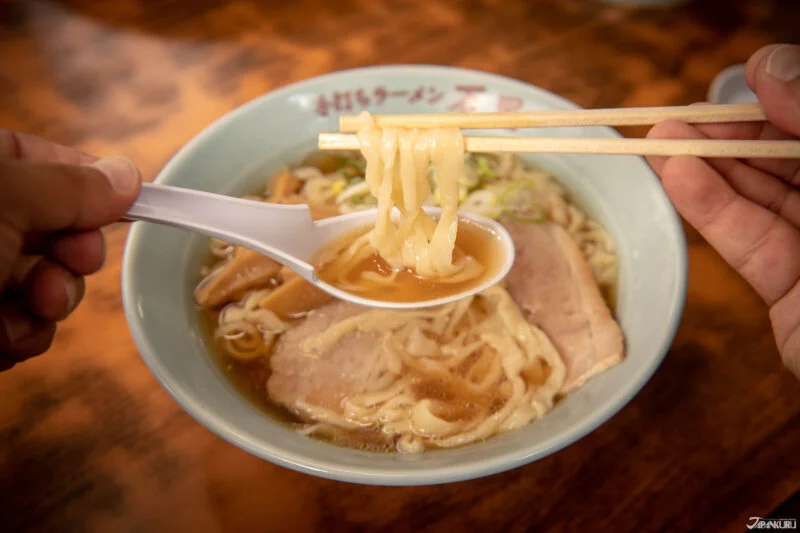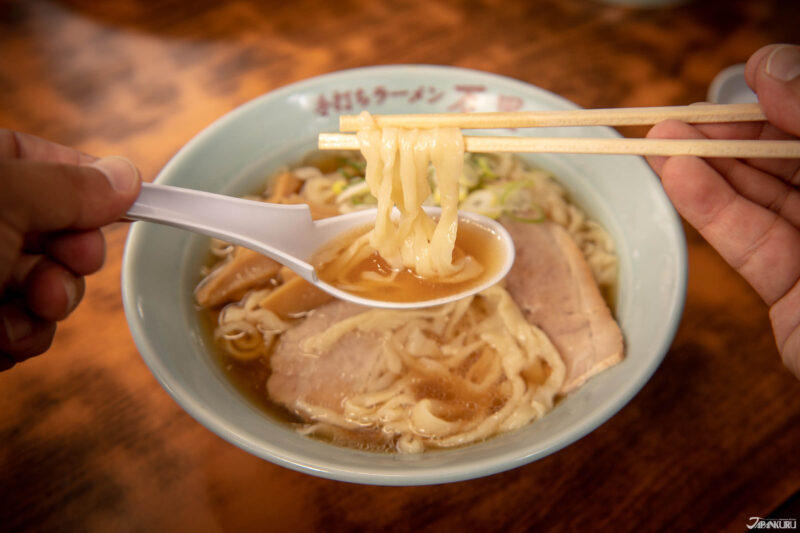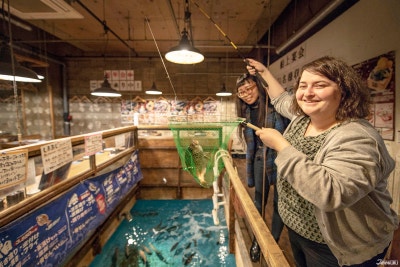Tokyo is a paradise for food lovers, offering everything from street snacks to upscale dining, and something to suit every palate, whether you’re craving rich ramen, premium wagyu beef yakiniku barbecue, or even monjayaki sizzling on the griddle. But it’s a busy city, with millions of locals and waves of foreign visitors always on the hunt for the most delicious meal. While you might just get lucky and find a hidden gem away from the crowds every once in a while, it’s not uncommon to find yourself lining up to try one tempting treat or another, and sometimes it’s hard to know which places will live up to the hype. So let’s look at five of Tokyo’s most popular eateries that are really worth the wait!
CONTENTS
① Monjayaki at Tsukishima Monja Kuuya

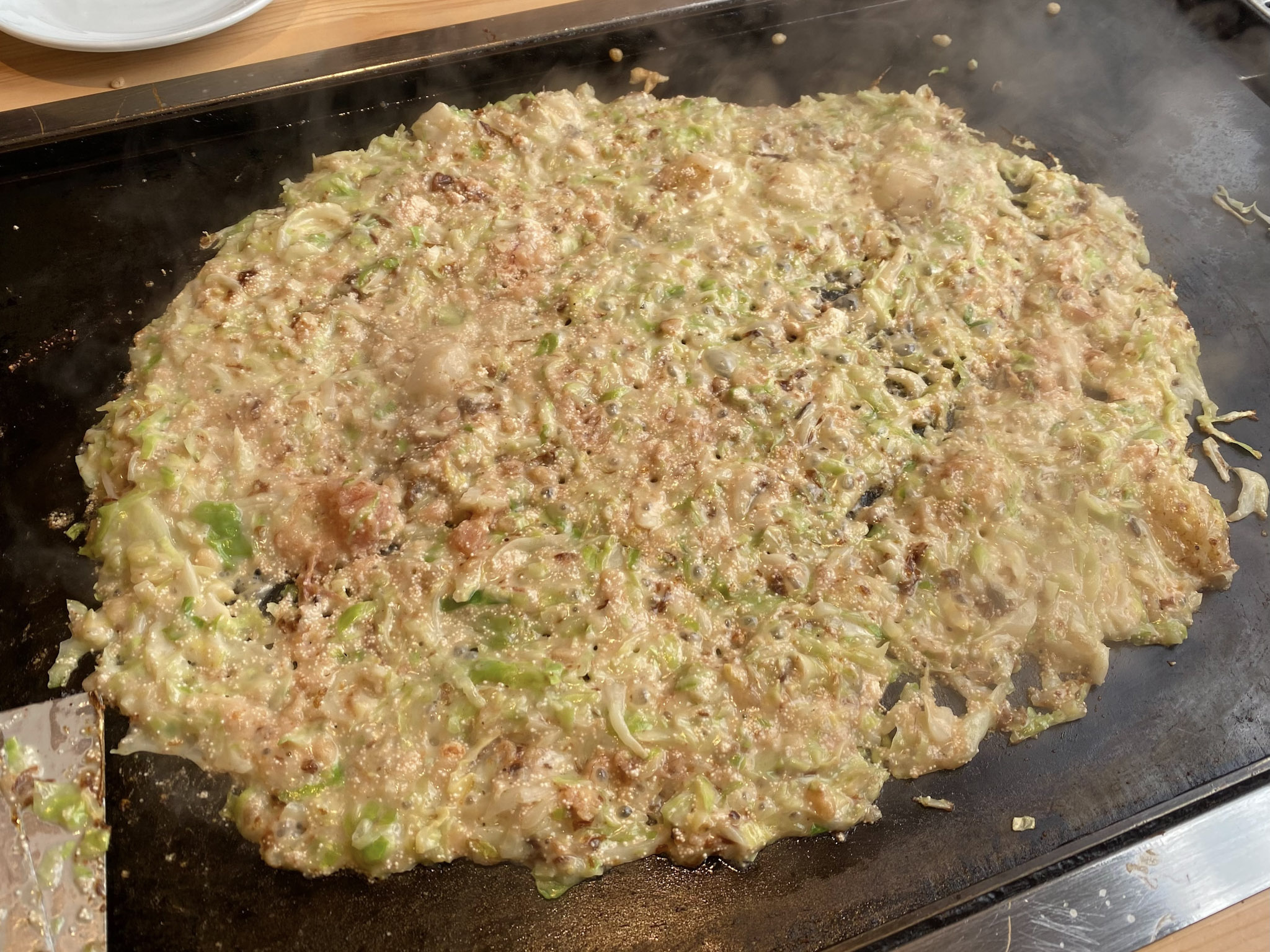
Located conveniently in the heart of Shibuya, Tsukishima Monja Kuuya offers griddle-cooked food like okonomiyaki, but their specialty is monjayaki – a similar dish made with thinner batter, local to Tokyo. Popular orders include the Mentaiko Mochi Monja, made with spicy pollack roe and rice cakes, or other monjayaki options made with seafood like squid or shrimp.
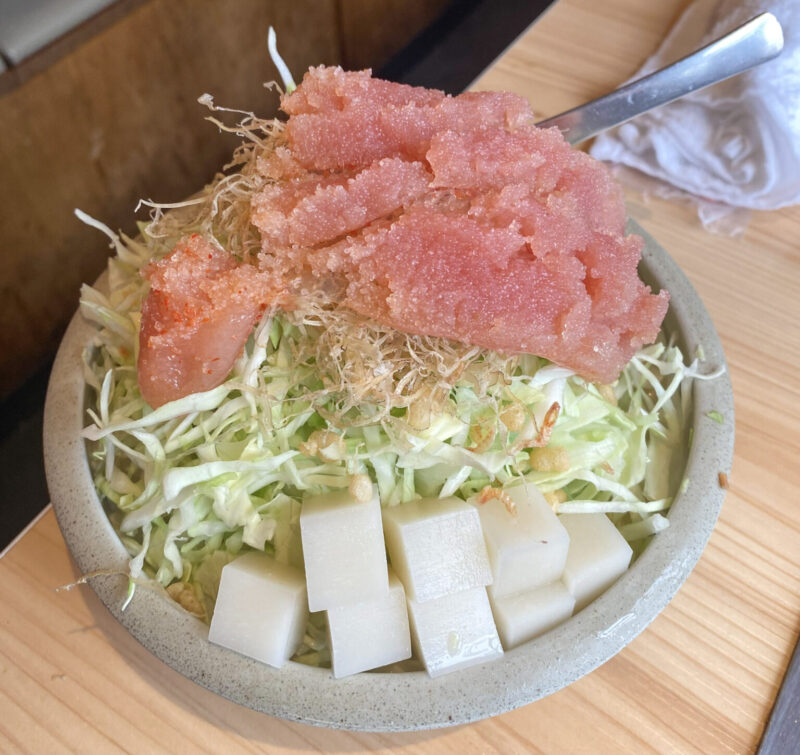

The illustrations on the menu and stylish options like “Squid Ink Risotto Monja” make the place feel special, but thanks to the laid-back atmosphere and plentiful seats, this restaurant is ideal for group gatherings – if you’re willing to wait, of course. They accept credit cards and are open all the way from 11:00 am to 4:00 am, making it a great spot for classic Japanese dining in Shibuya.
Average Wait Time: 30~45 minutes
Tsukishima Monja Kuuya (月島もんじゃ くうや)
1-25-6 Shibuya, Shibuya City, Tokyo
Hours: 11:00 – 4:00
Directions: 30 seconds from the Shibuya Station Hachiko Exit
② Ramen at Mutekiya

Mutekiya Ramen in Ikebukuro is famous for its flavorful, aromatic broth and chewy noodles, pairing a rich tonkotsu base with thick-cut chashu pork and notes of soy sauce. There’s not a lot to say about a good ramen spot – you get in, slurp down the noodles, and leave satisfied. But this ramen spot attracts both locals and tourists alike, all willing to brave the wait!
Average Wait Time: 60~75 minutes
Mutekiya (無敵家)
1-17-1 Minamiikebukuro, Toshima City, Tokyo
Hours: 10:30 – 4:00
Directions: 3 minutes on foot from the Ikebukuro Station East Exit
③ Afternoon Tea at Afternoon Tea Love & Table
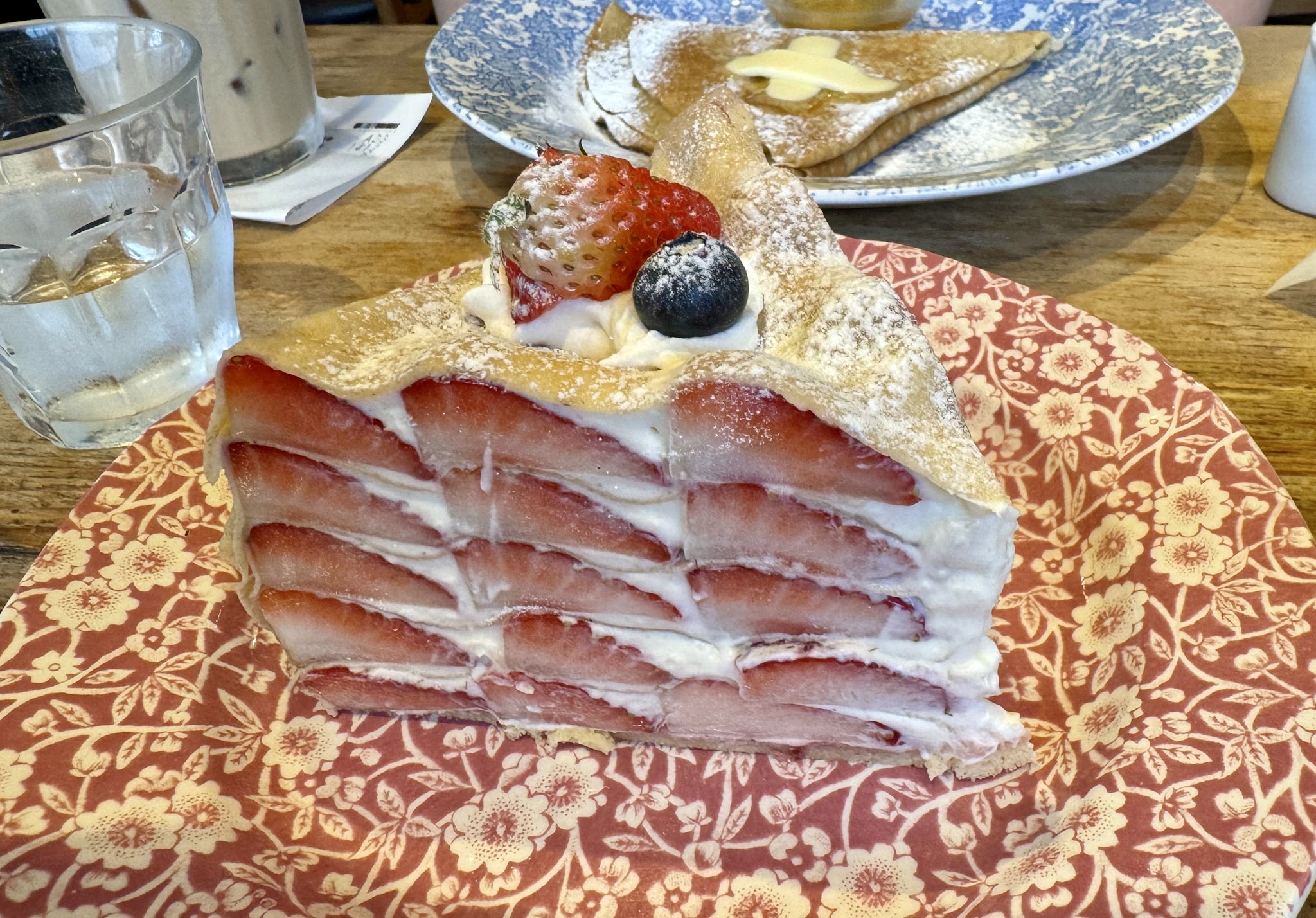
A chic cafe from the popular tea and home goods brand “Afternoon Tea,” Afternoon Tea Love & Table is known for its stacked mille crepe cakes, a visual and culinary delight that draws pastry lovers from near and far.
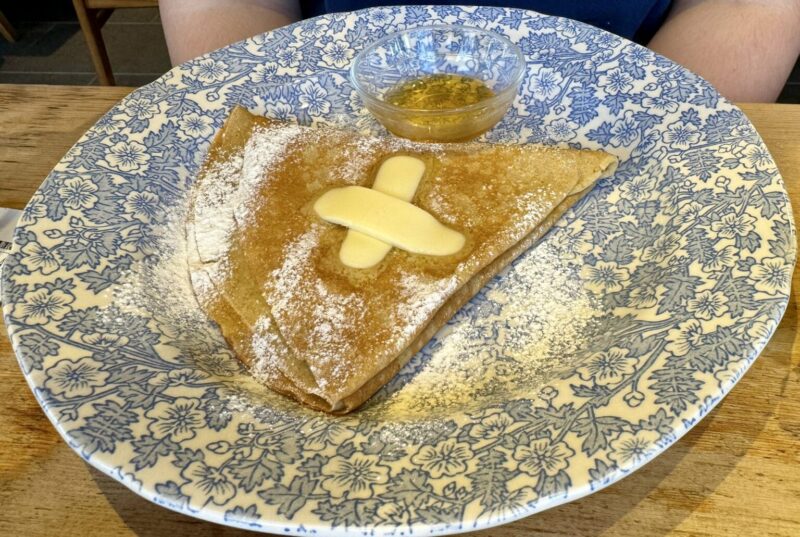
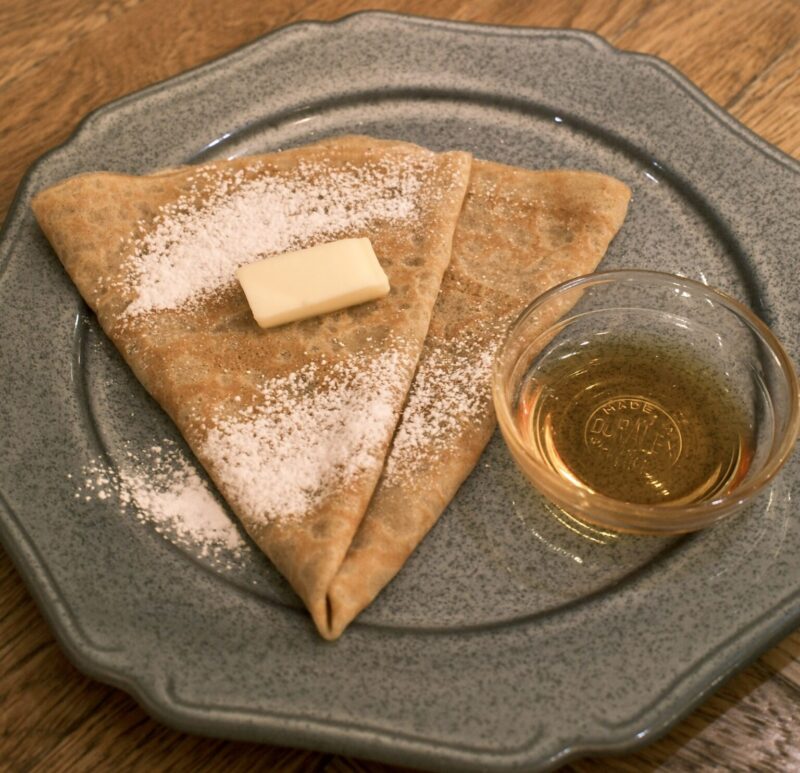
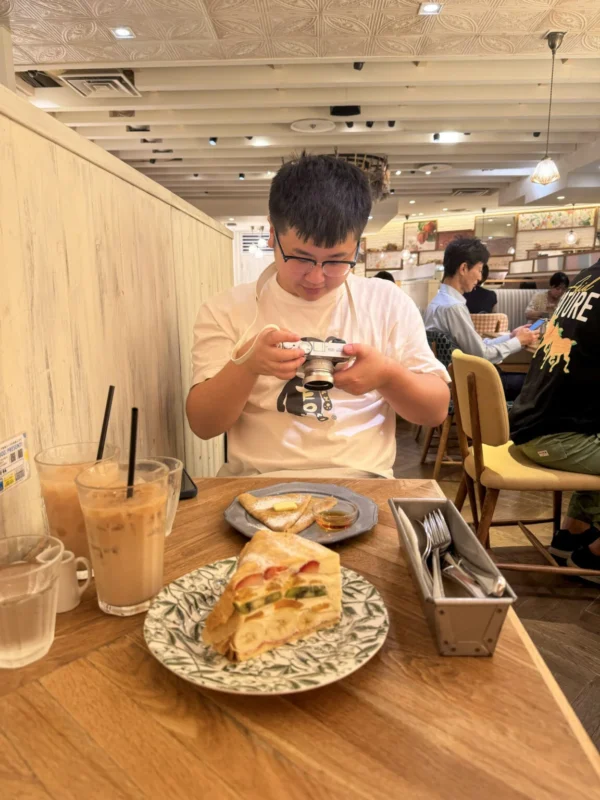
The shop has two branches, located in Omotesando and Shinjuku, so it’s easily accessible, and a convenient place to relax after exploring some of Tokyo’s busiest areas. The Omotesando location is particularly spacious, however – ideal for snapping photos! The cafe offers dine-in and takeaway options, and a selection of seasonal menu items, so don’t forget to check what’s new before you order!
Average Wait Time: 25~40 minutes
Afternoon Tea Love & Table Omotesando (アフタヌーンティー・ラブアンドテーブル 表参道)
4-3-2 Jingumae, Shibuya City, Tokyo
Hours: 10:00 – 19:00
Directions: 3 minutes on foot from Omotesando Station
Afternoon Tea Love & Table Shinjuku Lumine (アフタヌーンティー・ラブアンドテーブル ルミネ新宿)
Lumine Shinjuku 4F, 1-1-5 Nishishinjuku, Shinjuku City, Tokyo
Hours: 11:00 – 21:00
Directions: directly connected to Shinjuku Station
④ Hamburg Steak at Kiwamiya
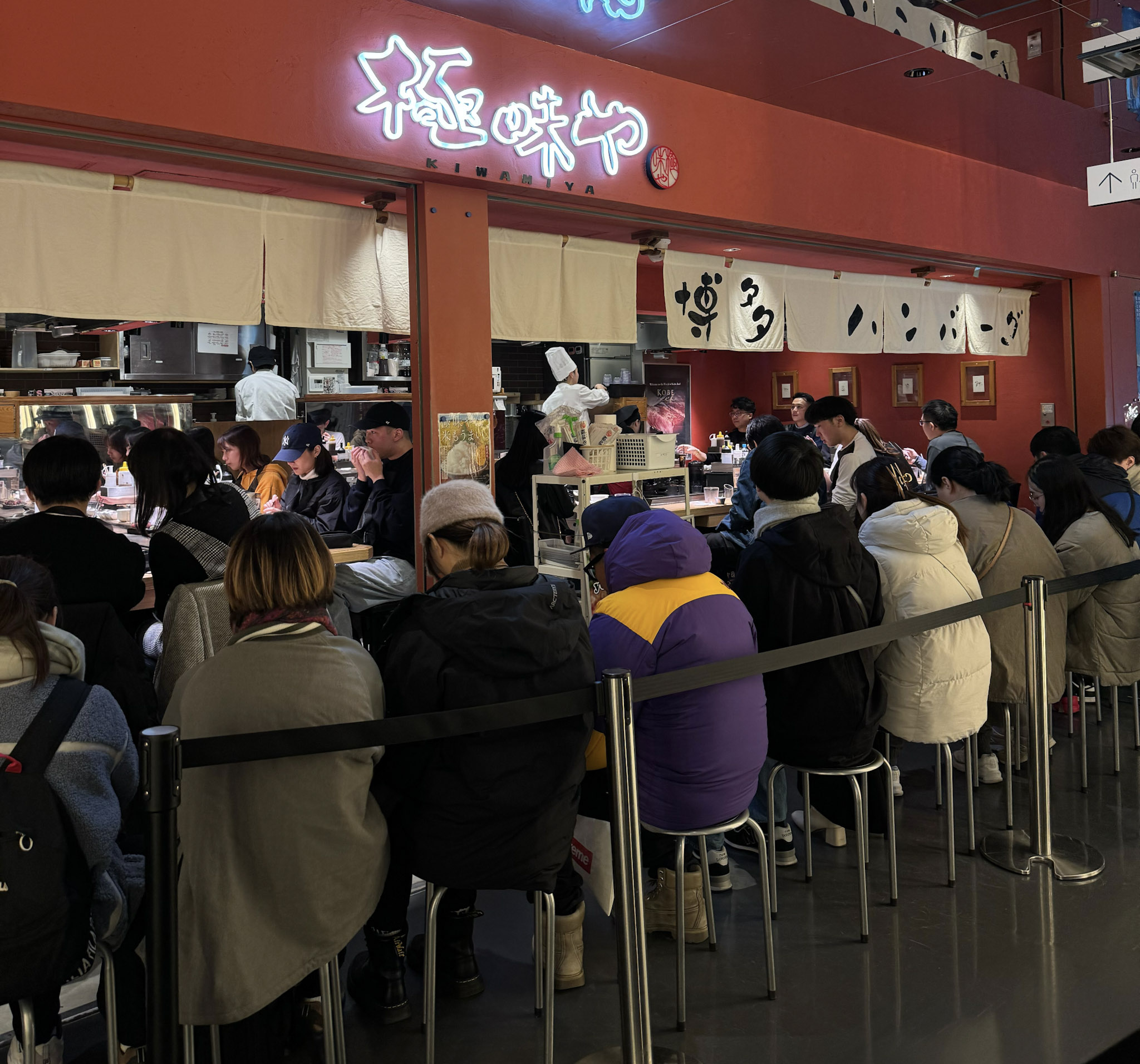
Hamburg steak (a thick beef patty without the bun) is a hearty Japanese favorite often associated with home cooking, but Kiwamiya specializes in a higher grade of “rare hamburg steaks.” The highlight of the restaurant is the personalization, allowing diners to cook the meat to their own preferred doneness on a small personal griddle.
The restaurant’s hamburg steaks are seasoned simply with salt, but diners rave about how the sparse additions actually highlight the rough chunks, the natural sweetness, and of course the rich, meaty flavor.
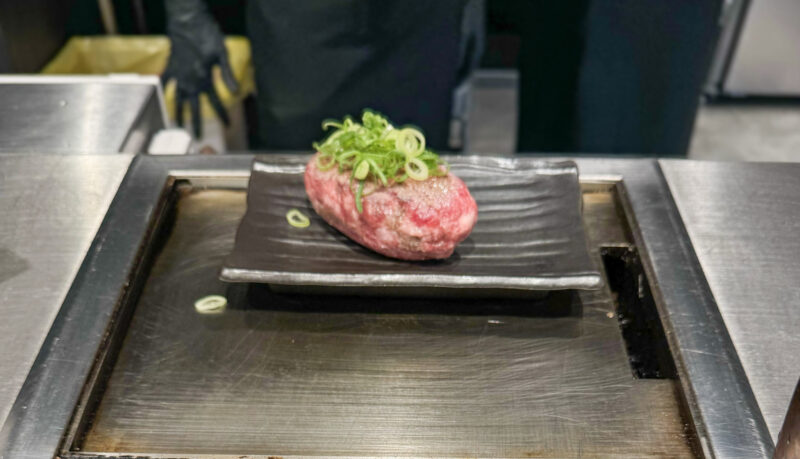

Their set meals also include unlimited salad, rice, soup, and self-serve ice cream, making it a must-visit for meat lovers with an appetite. Head to the Tokyo Station or Shibuya Parco locations when you’re ready to eat but not starving just yet, and be prepared to wait!
Average Wait Time: 45~70 minutes
Kiwamiya Tokyo Station (極味や 東京駅店)
Gransta Yaesu North 1F, 1-9-1 Marunouchi, Chiyoda City, Tokyo
Hours: 11:00 – 21:00
Directions: directly connected to Tokyo Station
Kiwamiya Shibuya Parco
Shibuya Parco B1F, 15-1 Udagawacho, Shibuya City, Tokyo
Hours: weekdays 11:30 – 23:00 | 11:00 – 22:30
Directions: 5 minutes on foot from Shibuya Station
⑤ Premium Wagyu Lunch at Yakiniku Inoue (Reservations Required)
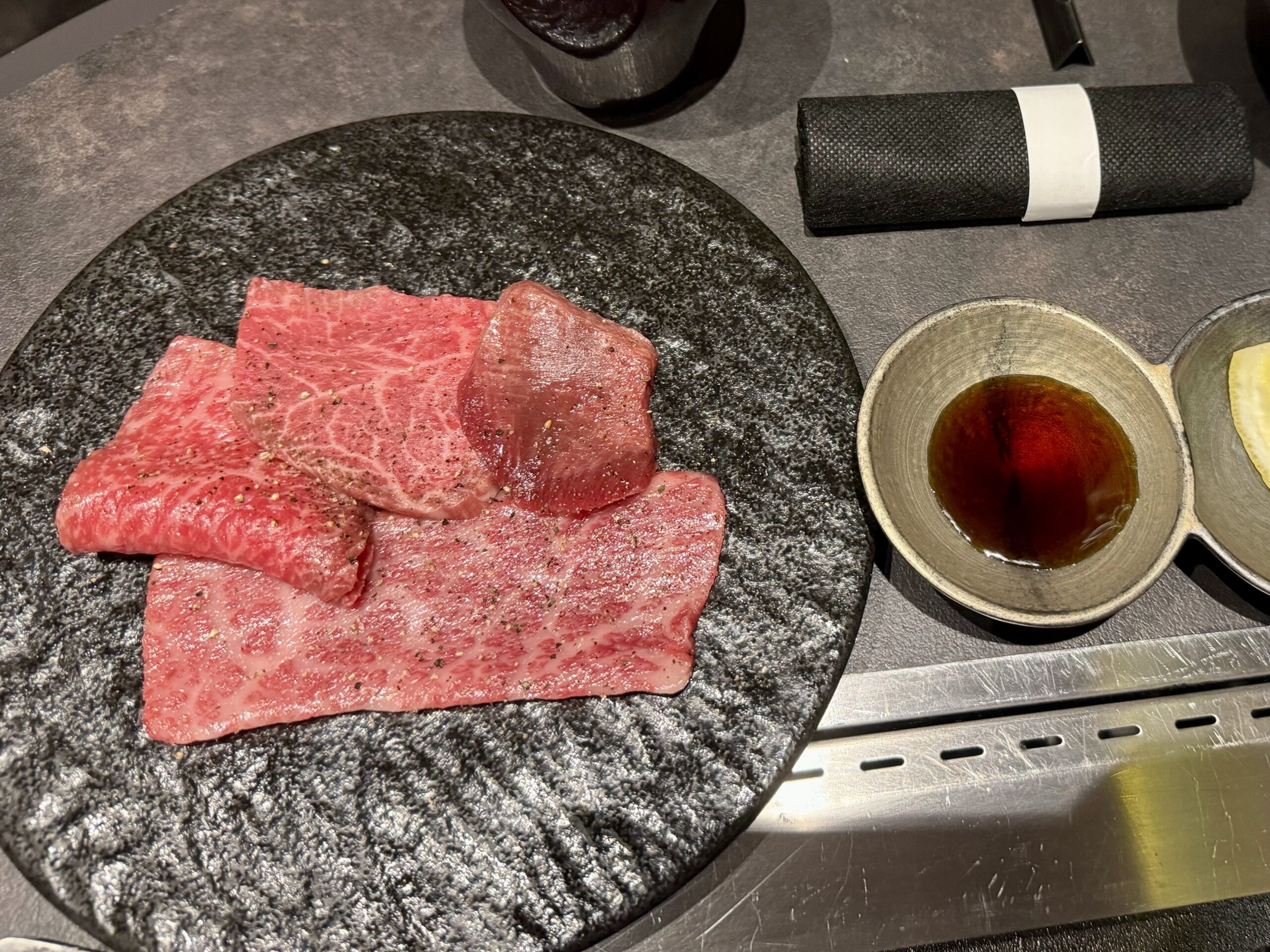
Renowned for its A4 and A5 grade wagyu beef, Yakiniku Inoue Ginza offers a premium yakiniku barbecue experience that highlights the meat’s tenderness and marbled fat, using expert techniques to show off all the qualities that have made Japanese beef famous worldwide. While dinner costs a lofty 15,000~20,000 yen per person, their lunch menu of barbecue sets and beef bowls is much more affordable for the average diner, typically around 2,000~3,000 yen.
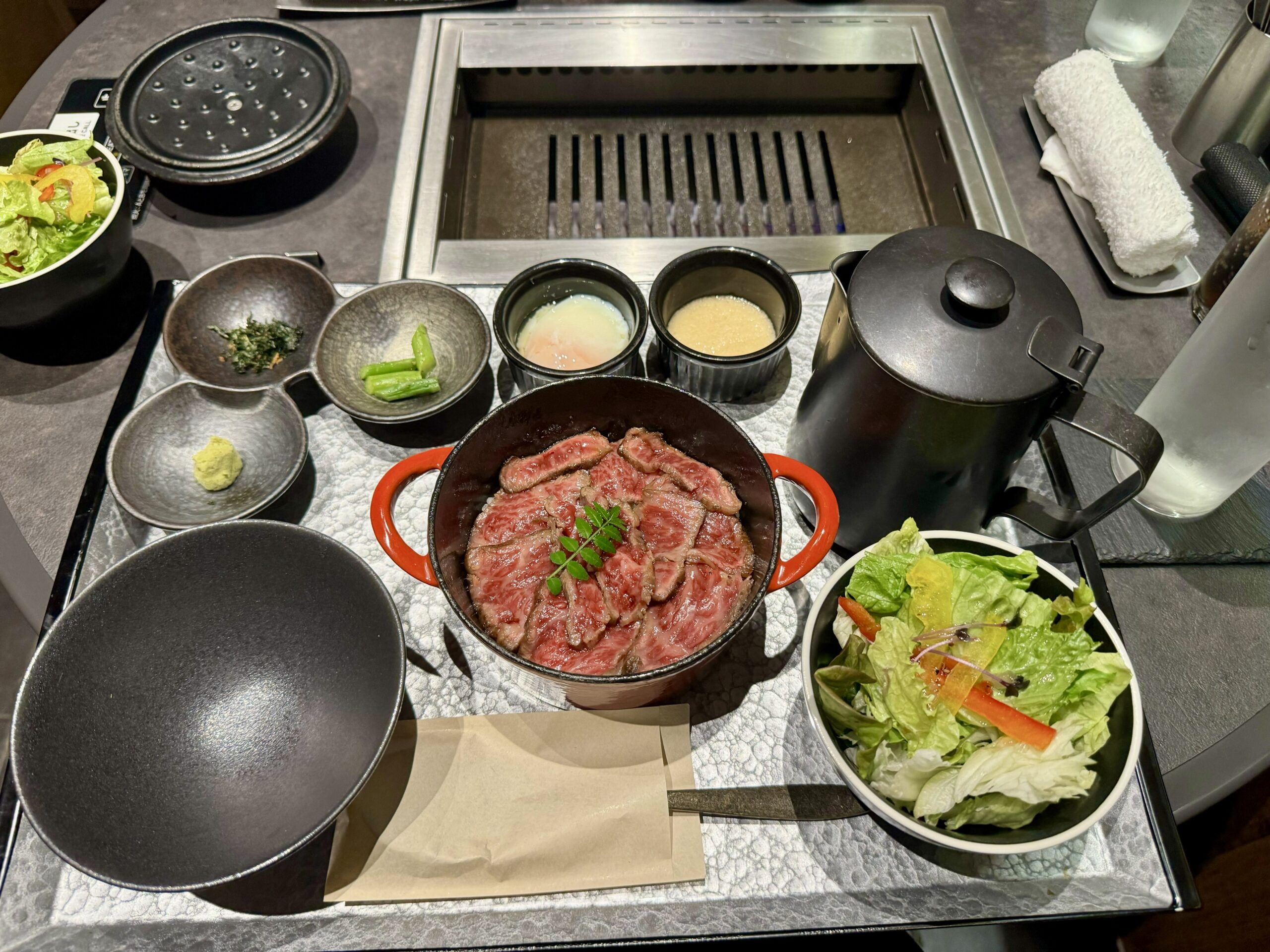
Of course, offering a great deal on mouth-watering, top-quality food in the ritzy neighborhood of Ginza has made the shop extremely popular. Just standing in a long line won’t cut it at this Japanese barbecue spot. Even for lunch, reservations are required, and often need to be booked a month or two in advance. It’s all worth it if you manage to snag a seat!
Average Wait Time: 1~2 months (reservations only!)
Yakiniku Inoue Ginza (焼肉いのうえ 銀座店)
1-6-6 Ginza, Chuo City, Tokyo
Hours: weekdays 11:00 – 15:00 / 17:00 – 23:00 | weekends 11:00 – 23:00
Directions: 1 minute on foot from Ginza-itchome Station, 5 minutes on foot from Ginza Station, Kyobashi Station, or Yurakucho Station
A Tokyo Food Tour Worth Waiting For
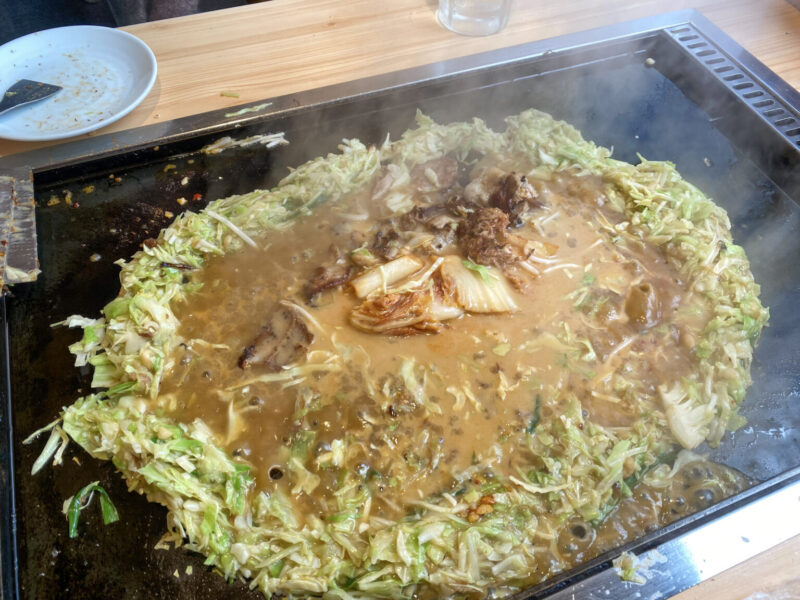
Tokyo’s dining scene is vibrant, and while some places require a wait or advance reservations, the superb food is often worth all the work. With a bit of planning and patience, a food tour with a few of these popular eateries will help you make your trip to Tokyo unforgettable!
For more info and updates from Japan, check Japankuru for new articles, and don’t forget to follow us on X (Twitter), Instagram, and Facebook!
Images, Original Article in Chinese by Sen Yang
English Edition by Sophia Appelbaum
COMMENT
FEATURED MEDIA
VIEW MORE 
A New Tokyo Animal Destination: Relax & Learn About the World’s Animals in Japan
#pr #japankuru #anitouch #anitouchtokyodome #capybara #capybaracafe #animalcafe #tokyotrip #japantrip #카피바라 #애니터치 #아이와가볼만한곳 #도쿄여행 #가족여행 #東京旅遊 #東京親子景點 #日本動物互動體驗 #水豚泡澡 #東京巨蛋城 #เที่ยวญี่ปุ่น2025 #ที่เที่ยวครอบครัว #สวนสัตว์ในร่ม #TokyoDomeCity #anitouchtokyodome

Shohei Ohtani Collab Developed Products & Other Japanese Drugstore Recommendations From Kowa
#pr #japankuru
#kowa #syncronkowa #japanshopping #preworkout #postworkout #tokyoshopping #japantrip #일본쇼핑 #일본이온음료 #오타니 #오타니쇼헤이 #코와 #興和 #日本必買 #日本旅遊 #運動補充能量 #運動飲品 #ช้อปปิ้งญี่ปุ่น #เครื่องดื่มออกกำลังกาย #นักกีฬา #ผลิตภัณฑ์ญี่ปุ่น #อาหารเสริมญี่ปุ่น

도쿄 근교 당일치기 여행 추천! 작은 에도라 불리는 ‘가와고에’
세이부 ‘가와고에 패스(디지털)’ 하나면 편리하게 이동 + 가성비까지 완벽하게! 필름카메라 감성 가득한 레트로 거리 길거리 먹방부터 귀여움 끝판왕 핫플&포토 스폿까지 총집합!
Looking for day trips from Tokyo? Try Kawagoe, AKA Little Edo!
Use the SEIBU KAWAGOE PASS (Digital) for easy, affordable transportation!
Check out the historic streets of Kawagoe for some great street food and plenty of picturesque retro photo ops.
#pr #japankuru #도쿄근교여행 #가와고에 #가와고에패스 #세이부패스 #기모노체험 #가와고에여행 #도쿄여행코스 #도쿄근교당일치기 #세이부가와고에패스
#tokyotrip #kawagoe #tokyodaytrip #seibukawagoepass #kimono #japantrip

Hirakata Park, Osaka: Enjoy the Classic Japanese Theme Park Experience!
#pr #japankuru #hirakatapark #amusementpark #japantrip #osakatrip #familytrip #rollercoaster #retrôvibes #枚方公園 #大阪旅遊 #關西私房景點 #日本親子旅行 #日本遊樂園 #木造雲霄飛車 #히라카타파크 #สวนสนุกฮิราคาตะพาร์ค

🍵Love Matcha? Upgrade Your Matcha Experience With Tsujiri!
・160년 전통 일본 말차 브랜드 츠지리에서 말차 덕후들이 픽한 인기템만 골라봤어요
・抹茶控的天堂!甜點、餅乾、飲品一次滿足,連伴手禮都幫你列好清單了
・ส่องมัทฉะสุดฮิต พร้อมพาเที่ยวร้านดังในอุจิ เกียวโต
#pr #japankuru #matcha #matchalover #uji #kyoto #japantrip #ujimatcha #matchalatte #matchasweets #tsujiri #말차 #말차덕후 #츠지리 #교토여행 #말차라떼 #辻利抹茶 #抹茶控 #日本抹茶 #宇治 #宇治抹茶 #日本伴手禮 #抹茶拿鐵 #抹茶甜點 #มัทฉะ #ของฝากญี่ปุ่น #ชาเขียวญี่ปุ่น #ซึจิริ #เกียวโต

・What Is Nenaito? And How Does This Sleep Care Supplement Work?
・你的睡眠保健品——認識「睡眠茶氨酸錠」
・수면 케어 서플리먼트 ‘네나이토’란?
・ผลิตภัณฑ์เสริมอาหารดูแลการนอน “Nenaito(ネナイト)” คืออะไร?
#pr #japankuru #sleepcare #japanshopping #nenaito #sleepsupplement #asahi #睡眠茶氨酸錠 #睡眠保健 #朝日 #l茶胺酸 #日本藥妝 #日本必買 #일본쇼핑 #수면 #건강하자 #네나이토 #일본영양제 #อาหารเสริมญี่ปุ่น #ช้อปปิ้งญี่ปุ่น #ร้านขายยาญี่ปุ่น #ดูแลตัวเองก่อนนอน #อาซาฮิ

Japanese Drugstore Must-Buys! Essential Items from Hisamitsu® Pharmaceutical
#PR #japankuru #hisamitsu #salonpas #feitas #hisamitsupharmaceutical #japanshopping #tokyoshopping #traveltips #japanhaul #japantrip #japantravel

Whether you grew up with Dragon Ball or you just fell in love with Dragon Ball DAIMA, you'll like the newest JINS collab. Shop this limited-edition Dragon Ball accessory collection to find some of the best Dragon Ball merchandise in Japan!
>> Find out more at Japankuru.com! (link in bio)
#japankuru #dragonball #dragonballdaima #animecollab #japanshopping #jins #japaneseglasses #japantravel #animemerch #pr

This month, Japankuru teamed up with @official_korekoko to invite three influencers (originally from Thailand, China, and Taiwan) on a trip to Yokohama. Check out the article (in Chinese) on Japankuru.com for all of their travel tips and photography hints - and look forward to more cool collaborations coming soon!
【橫濱夜散策 x 教你怎麼拍出網美照 📸✨】
每次來日本玩,是不是都會先找旅日網紅的推薦清單?
這次,我們邀請擁有日本豐富旅遊經驗的🇹🇭泰國、🇨🇳中國、🇹🇼台灣網紅,帶你走進夜晚的橫濱!從玩樂路線到拍照技巧,教你怎麼拍出最美的夜景照。那些熟悉的景點,換個視角說不定會有新發現~快跟他們一起出發吧!
#japankuru #橫濱紅磚倉庫 #汽車道 #中華街 #yokohama #japankuru #橫濱紅磚倉庫 #汽車道 #中華街 #yokohama #yokohamaredbrickwarehouse #yokohamachinatown

If you’re a fan of Vivienne Westwood's Japanese designs, and you’re looking forward to shopping in Harajuku this summer, we’ve got important news for you. Vivienne Westwood RED LABEL Laforet Harajuku is now closed for renovations - but the grand reopening is scheduled for July!
>> Find out more at Japankuru.com! (link in bio)
#japankuru #viviennewestwood #harajuku #omotesando #viviennewestwoodredlabel #viviennewestwoodjapan #비비안웨스트우드 #오모테산도 #하라주쿠 #日本購物 #薇薇安魏斯伍德 #日本時尚 #原宿 #表參道 #japantrip #japanshopping #pr

Ready to see TeamLab in Kyoto!? At TeamLab Biovortex Kyoto, the collective is taking their acclaimed immersive art and bringing it to Japan's ancient capital. We can't wait to see it for ourselves this autumn!
>> Find out more at Japankuru.com! (link in bio)
#japankuru #teamlab #teamlabbiovortex #kyoto #kyototrip #japantravel #artnews
Photos courtesy of teamLab, Exhibition view of teamLab Biovortex Kyoto, 2025, Kyoto ® teamLab, courtesy Pace Gallery

Japanese Makeup Shopping • A Trip to Kamakura & Enoshima With Canmake’s Cool-Toned Summer Makeup
#pr #canmake #enoshima #enoden #에노시마 #캔메이크 #japanesemakeup #japanesecosmetics

⚔️The Robot Restaurant is gone, but the Samurai Restaurant is here to take its place. Check it out, and don't forget your coupon!
🍣신주쿠의 명소 로봇 레스토랑이 사무라이 레스토랑으로 부활! 절찬 쿠폰 발급중
💃18歲以上才能入場的歌舞秀,和你想的不一樣!拿好優惠券去看看~
#tokyo #shinjuku #samurairestaurant #robotrestaurant #tokyotrip #도쿄여행 #신주쿠 #사무라이레스토랑 #이색체험 #할인이벤트 #歌舞伎町 #東京景點 #武士餐廳 #日本表演 #日本文化體驗 #japankuru #japantrip #japantravel #japanlovers #japan_of_insta

Japanese appliance & electronics shopping with our KOJIMA x BicCamera coupon!
用JAPANKURU的KOJIMA x BicCamera優惠券買這些正好❤️
코지마 x 빅 카메라 쿠폰으로 일본 가전 제품 쇼핑하기
#pr #japankuru #japanshopping #kojima #biccamera #japaneseskincare #yaman #dji #osmopocket3 #skincaredevice #日本購物 #美容儀 #相機 #雅萌 #日本家電 #일본여행 #면세 #여행꿀팁 #일본쇼핑리스트 #쿠폰 #일본쇼핑 #일본브랜드 #할인 #코지마 #빅카메라 #japankurucoupon

